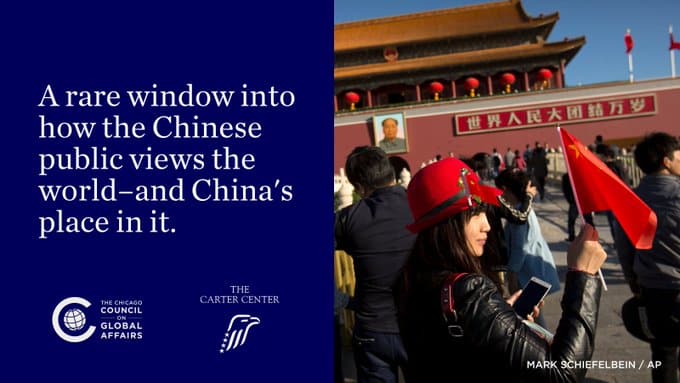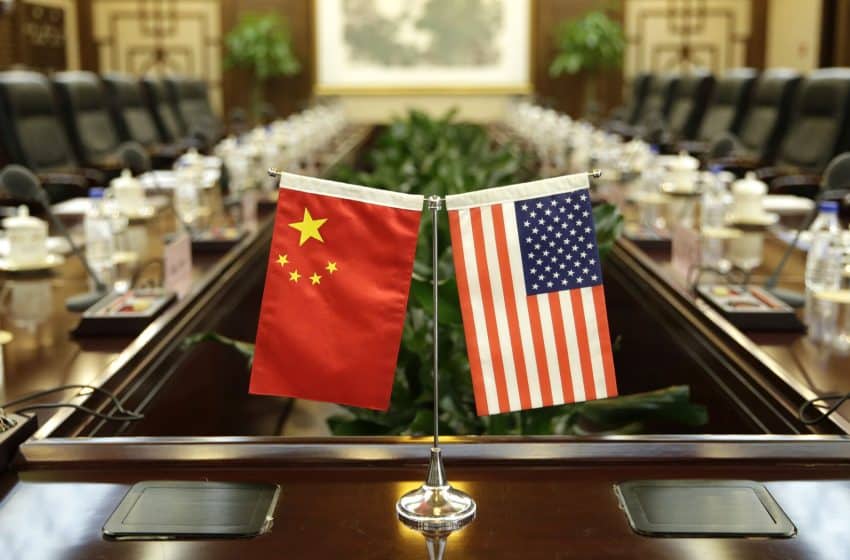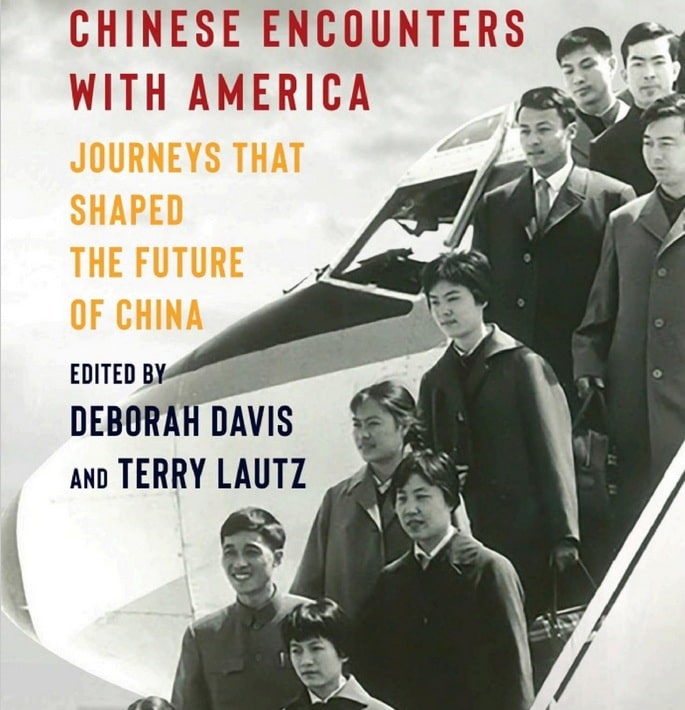The Future of U.S.-Chinese Relations: Conflict is a Choice, Not a Necessity
On January 19, 2011, U.S. President Barack Obama and Chinese President Hu Jintao issued a joint statement at the end of Hu’s visit to Washington. It proclaimed their shared commitment to a “positive, cooperative, and comprehensive U.S.-China relationship.” Each party reassured the other regarding his principal concern, announcing, “The United States reiterated that it welcomes a strong, prosperous, and successful China that plays a greater role in world affairs. China welcomes the United States as an Asia-Pacific nation that contributes to peace, stability and prosperity in the region.”
Since then, the two governments have set about implementing the stated objectives. Top American and Chinese officials have exchanged visits and institutionalized their exchanges on major strategic and economic issues. Military-to-military contacts have been restarted, opening an important channel of communication. And at the unofficial level, so-called track-two groups have explored possible evolutions of the U.S.-Chinese relationship.
Yet as cooperation has increased, so has controversy. Significant groups in both countries claim that a contest for supremacy between China and the United States is inevitable and perhaps already under way. In this perspective, appeals for U.S.-Chinese cooperation appear outmoded and even naive.
The mutual recriminations emerge from distinct yet parallel analyses in each country. Some American strategic thinkers argue that Chinese policy pursues two long-term objectives: displacing the United States as the preeminent power in the western Pacific and consolidating Asia into an exclusionary bloc deferring to Chinese economic and foreign policy interests. In this conception, even though China’s absolute military capacities are not formally equal to those of the United States, Beijing possesses the ability to pose unacceptable risks in a conflict with Washington and is developing increasingly sophisticated means to negate traditional U.S. advantages. Its invulnerable second-strike nuclear capability will eventually be paired with an expanding range of antiship ballistic missiles and asymmetric capabilities in new domains such as cyberspace and space. China could secure a dominant naval position through a series of island chains on its periphery, some fear, and once such a screen exists, China’s neighbors, dependent as they are on Chinese trade and uncertain of the United States’ ability to react, might adjust their policies according to Chinese preferences. Eventually, this could lead to the creation of a Sinocentric Asian bloc dominating the western Pacific. The most recent U.S. defense strategy report reflects, at least implicitly, some of these apprehensions.
No Chinese government officials have proclaimed such a strategy as China’s actual policy. Indeed, they stress the opposite. However, enough material exists in China’s quasi-official press and research institutes to lend some support to the theory that relations are heading for confrontation rather than cooperation.
U.S. strategic concerns are magnified by ideological predispositions to battle with the entire nondemocratic world. Authoritarian regimes, some argue, are inherently brittle, impelled to rally domestic support by nationalist and expansionist rhetoric and practice. In these theories — versions of which are embraced in segments of both the American left and the American right — tension and conflict with China grow out of China’s domestic structure. Universal peace will come, it is asserted, from the global triumph of democracy rather than from appeals for cooperation. The political scientist Aaron Friedberg writes, for example, that “a liberal democratic China will have little cause to fear its democratic counterparts, still less to use force against them.” Therefore, “stripped of diplomatic niceties, the ultimate aim of the American strategy [should be] to hasten a revolution, albeit a peaceful one, that will sweep away China’s one-party authoritarian state and leave a liberal democracy in its place.”
On the Chinese side, the confrontational interpretations follow an inverse logic. They see the United States as a wounded superpower determined to thwart the rise of any challenger, of which China is the most credible. No matter how intensely China pursues cooperation, some Chinese argue, Washington’s fixed objective will be to hem in a growing China by military deployment and treaty commitments, thus preventing it from playing its historic role as the Middle Kingdom. In this perspective, any sustained cooperation with the United States is self-defeating, since it will only serve the overriding U.S. objective of neutralizing China. Systematic hostility is occasionally considered to inhere even in American cultural and technological influences, which are sometimes cast as a form of deliberate pressure designed to corrode China’s domestic consensus and traditional values. The most assertive voices argue that China has been unduly passive in the face of hostile trends and that (for example, in the case of territorial issues in the South China Sea) China should confront those of its neighbors with which it has disputed claims and then, in the words of the strategic analyst Long Tao, “reason, think ahead and strike first before things gradually run out of hand . . . launch[ing] some tiny-scale battles that could deter provocateurs from going further.”
THE PAST NEED NOT BE PROLOGUE
Is there, then, a point in the quest for a cooperative U.S.-Chinese relationship and in policies designed to achieve it? To be sure, the rise of powers has historically often led to conflict with established countries. But conditions have changed. It is doubtful that the leaders who went so blithely into a world war in 1914 would have done so had they known what the world would be like at its end. Contemporary leaders can have no such illusions. A major war between developed nuclear countries must bring casualties and upheavals impossible to relate to calculable objectives. Preemption is all but excluded, especially for a pluralistic democracy such as the United States.
If challenged, the United States will do what it must to preserve its security. But it should not adopt confrontation as a strategy of choice. In China, the United States would encounter an adversary skilled over the centuries in using prolonged conflict as a strategy and whose doctrine emphasizes the psychological exhaustion of the opponent. In an actual conflict, both sides possess the capabilities and the ingenuity to inflict catastrophic damage on each other. By the time any such hypothetical conflagration drew to a close, all participants would be left exhausted and debilitated. They would then be obliged to face anew the very task that confronts them today: the construction of an international order in which both countries are significant components.
The blueprints for containment drawn from Cold War strategies used by both sides against an expansionist Soviet Union do not apply to current conditions. The economy of the Soviet Union was weak (except for military production) and did not affect the global economy. Once China broke off ties and ejected Soviet advisers, few countries except those forcibly absorbed into the Soviet orbit had a major stake in their economic relationship with Moscow. Contemporary China, by contrast, is a dynamic factor in the world economy. It is a principaltrading partner of all its neighbors and most of the Western industrialpowers, including the United States. A prolonged confrontation between China and the United States would alter the world economy with unsettling consequences for all.
Nor would China find that the strategy it pursued in its own conflict with the Soviet Union fits a confrontation with the UnitedStates. Only a few countries — and no Asian ones — would treat an American presence in Asia as “fingers” to be “chopped off” (in Deng Xiaoping’s graphic phrase about Soviet forward positions). Even those Asian states that are not members of alliances with the United States seek the reassurance of an American political presence in the region and of American forces in nearby seas as the guarantor of the world to which they have become accustomed.Their approach was expressed by a senior Indonesian official to an American counterpart: “Don’t leave us, but don’t make us choose.”
China’s recent military buildup is not in itself an exceptional phenomenon: the more unusual outcome would be if the world’s second-largest economy and largest importer of natural resources did not translate its economic power into some increased military capacity. The issue is whether that buildup is open ended and to what purposes it is put. If the United States treats every advance in Chinese military capabilities as a hostile act, it will quickly find itself enmeshed in an endless series of disputes on behalf of esoteric aims. But China must be aware, from its own history, of the tenuous dividing line between defensive and offensive capabilities and of the consequences of an unrestrained arms race.
China’s leaders will have their own powerful reasons for rejecting domestic appeals for an adversarial approach — as indeed they have publicly proclaimed. China’s imperial expansion has historically been achieved by osmosis rather than conquest, or by the conversionto Chinese culture of conquerors who then added their own territoriesto the Chinese domain. Dominating Asia militarily would be a formidable undertaking. The Soviet Union, during the Cold War, bordered on a string of weak countries drained by war and occupation and dependent on American troop commitments for their defense. China today faces Russia in the north; Japan and South Korea, with American military alliances, to the east; Vietnam and India to the south; and Indonesia and Malaysia not far away. This is not a constellation conducive to conquest. It is more likely to raise fears of encirclement. Each of these countries has a long military tradition and would pose a formidable obstacle if its territory or its ability to conduct an independent policy were threatened. A militant Chinese foreign policy would enhance cooperation among all or at least some of these nations, evoking China’s historic nightmare, as happened in the period 2009–10.
DEALING WITH THE NEW CHINA
Another reason for Chinese restraint in at least the medium term is the domestic adaptation the country faces. The gap in Chinese society between the largely developed coastal regions and the undeveloped western regions has made Hu’s objective of a “harmonious society” both compelling and elusive. Cultural changes compound the challenge. The next decades will witness, for the first time, the full impact of one-child families on adult Chinese society. This is bound to modify cultural patterns in a society in which large families have traditionally taken care of the aged and the handicapped. When four grandparents compete for the attention of one child and invest him with the aspirations heretofore spread across many offspring, a new pattern of insistent achievement and vast, perhaps unfulfillable, expectations may arise.
All these developments will further complicate the challenges of China’s governmental transition starting in 2012, in which the presidency; the vice-presidency; the considerable majority of the positions in China’s Politburo, State Council, and Central Military Commission; and thousands of other key national and provincial posts will be staffed with new appointees. The new leadership group will consist, for the most part, of members of the first Chinese generation in a century and a half to have lived all their lives in a country at peace. Its primary challenge will be finding a way to deal with a society revolutionized by changing economic conditions, unprecedented and rapidly expanding technologies of communication, a tenuous global economy, and the migration of hundreds of millions of people from China’s countryside to its cities. The model of government that emerges will likely be a synthesis of modern ideas and traditional Chinese political and cultural concepts, and the quest for that synthesis will provide the ongoing drama of China’s evolution.
These social and political transformations are bound to be followed with interest and hope in the United States. Direct American intervention would be neither wise nor productive. The United States will, as it should, continue to make its views known on human rights issues and individual cases. And its day-to-day conduct will express its national preference for democratic principles. But a systematic project to transform China’s institutions by diplomatic pressure and economic sanctions is likely to backfire and isolate the very liberals it is intended to assist. In China, it would be interpreted by a considerable majority through the lens of nationalism, recalling earlier eras of foreign intervention.
What this situation calls for is not an abandonment of American values but a distinction between the realizable and the absolute. The U.S.-Chinese relationship should not be considered as a zero-sum game, nor can the emergence of a prosperous and powerful China be assumed in itself to be an American strategic defeat.
A cooperative approach challenges preconceptions on both sides. The United States has few precedents in its national experience of relating to a country of comparable size, self-confidence, economic achievement, and international scope and yet with such a different culture and political system. Nor does history supply China with precedents for how to relate to a fellow great power with a permanent presence in Asia, a vision of universal ideals not geared toward Chinese conceptions, and alliances with several of China’s neighbors. Prior to the United States, all countries establishing such a position did so as a prelude to an attempt to dominate China.
The simplest approach to strategy is to insist on overwhelming potential adversaries with superior resources and materiel. But in the contemporary world, this is only rarely feasible. China and the United States will inevitably continue as enduring realities for each other. Neither can entrust its security to the other — no great power does, for long — and each will continue to pursue its own interests, sometimes at the relative expense of the other. But both have the responsibility to take into account the other’s nightmares, and both would do well to recognize that their rhetoric, as much as their actual policies, can feed into the other’s suspicions.
China’s greatest strategic fear is that an outside power or powers will establish military deployments around China’s periphery capable of encroaching on China’s territory or meddling in its domestic institutions. When China deemed that it faced such a threat in the past, it went to war rather than risk the outcome of what it saw as gathering trends — in Korea in 1950, against India in 1962, along the northern border with the Soviet Union in 1969, and against Vietnam in 1979.
The United States’ fear, sometimes only indirectly expressed, is of being pushed out of Asia by an exclusionary bloc. The United States fought a world war against Germany and Japan to prevent such an outcome and exercised some of its most forceful Cold War diplomacy under administrations of both political parties to this end against the Soviet Union. In both enterprises, it is worth noting, substantial joint U.S.-Chinese efforts were directed against the perceived threat of hegemony.
Other Asian countries will insist on their prerogatives to develop their capacities for their own national reasons, not as part of a contest between outside powers. They will not willingly consign themselves to a revived tributary order. Nor do they regard themselves as elements in an American containment policy or an American project to alter China’s domestic institutions. They aspire to good relations with both China and the United States and will resist any pressure to choose between the two.
Can the fear of hegemony and the nightmare of military encirclement be reconciled? Is it possible to find a space in which both sides can achieve their ultimate objectives without militarizing their strategies? For great nations with global capabilities and divergent, even partly conflicting aspirations, what is the margin between conflict and abdication?
That China will have a major influence in the regions surrounding it is inherent in its geography, values, and history. The limits of that influence, however, will be shaped by circumstance and policy decisions. These will determine whether an inevitable quest for influence turns into a drive to negate or exclude other independent sources of power.
For nearly two generations, American strategy relied on local regional defense by American ground forces — largely to avoid the catastrophic consequences of a general nuclear war. In recent decades, congressional and public opinion have impelled an end to such commitments in Vietnam, Iraq, and Afghanistan. Now, fiscal considerations further limit the range of such an approach. American strategy has been redirected from defending territory to threatening unacceptable punishment against potential aggressors. This requires forces capable of rapid intervention and global reach, but not bases ringing China’s frontiers. What Washington must not do is combine a defense policy based on budgetary restraints with a diplomacy based on unlimited ideological aims.
Just as Chinese influence in surrounding countries may spur fears of dominance, so efforts to pursue traditional American national interests can be perceived as a form of military encirclement. Both sides must understand the nuances by which apparently traditional and apparently reasonable courses can evoke the deepest worries of the other. They should seek together to define the sphere in which their peaceful competition is circumscribed. If that is managed wisely, both military confrontation and domination can be avoided; if not, escalating tension is inevitable. It is the task of diplomacy to discover this space, to expand it if possible, and to prevent the relationship from being overwhelmed by tactical and domestic imperatives.
COMMUNITY OR CONFLICT
The current world order was built largely without Chinese participation, and hence China sometimes feels less bound than others by its rules. Where the order does not suit Chinese preferences, Beijing has set up alternative arrangements, such as in the separate currency channels being established with Brazil and Japan and other countries. If the pattern becomes routine and spreads into many spheres of activity, competing world orders could evolve. Absent common goals coupled with agreed rules of restraint, institutionalized rivalry is likely to escalate beyondthe calculations and intentions of its advocates. In an era in which unprecedented offensive capabilities and intrusive technologies multiply, the penalties of such a course could be drastic and perhaps irrevocable.
Crisis management will not be enough to sustain a relationship so global and beset by so many differing pressures within and between both countries, which is why I have argued for the concept of a Pacific Community and expressed the hope that China and the United States can generate a sense of common purpose on at least some issues of general concern. But the goal of such a community cannot be reached if either side conceives of the enterprise as primarily a more effective way to defeat or undermine the other. Neither China nor the United States can be systematically challenged without its noticing, and if such a challenge is noted, it will be resisted. Both need to commit themselves to genuine cooperation and find a way to communicate and relate their visions to each other and to the world.
Some tentative steps in that direction have already been undertaken. For example, the United States has joined several other countries in beginning negotiations on the Trans-Pacific Partnership (TPP), a free-trade pact linking the Americas with Asia. Such an arrangement could be a step toward a Pacific Community because it would lower trade barriers among the world’s most productive, dynamic, and resource-rich economies and link the two sides of the ocean in shared projects.
Obama has invited China to join the TPP. However, the terms of accession as presented by American briefers and commentators have sometimes seemed to require fundamental changes in China’s domestic structure. To the extent that is the case, the TPP could be regarded in Beijing as part of a strategy to isolate China. For its part, China has put forward comparable alternative arrangements. It has negotiated a trade pact with the Association of Southeast Asian Nations and has broached a Northeast Asian trade pact with Japan and South Korea.
Important domestic political considerations are involved for all parties. But if China and the United States come to regard each other’s trade-pact efforts as elements in a strategy of isolation, the Asia-Pacific region could devolve into competing adversarial power blocs. Ironically, this would be a particular challenge if China meets frequent American calls to shift from an export-led to a consumption-driven economy, as its most recent five-year plan contemplates. Such a development could reduce China’s stake in the United States as an export market even as it encourages other Asian countries to further orient their economies toward China.
The key decision facing both Beijing and Washington is whether to move toward a genuine effort at cooperation or fall into a new version of historic patterns of international rivalry. Both countries have adopted the rhetoric of community. They have even established a high-level forum for it, the Strategic and Economic Dialogue, which meets twice a year. It has been productive on immediate issues, but it is still in the foothills of its ultimate assignment to produce a truly global economic and political order. And if a global order does not emerge in the economic field, barriers to progress on more emotional and less positive-sum issues, such as territory and security, may grow insurmountable.
THE RISKS OF RHETORIC
As they pursue this process, both sides need to recognize the impact of rhetoric on perceptions and calculations. American leaders occasionally launch broadsides against China, including specific proposals for adversarial policies, as domestic political necessities. This occurs even — perhaps especially — when a moderate policy is the ultimate intention. The issue is not specific complaints, which should be dealt with on the merits of the issue, but attacks on the basic motivations of Chinese policy, such as declaring China a strategicadversary. The target of these attacks is bound to ask whether domestic imperatives requiring affirmations of hostility will sooner or later require hostile actions. By the same token, threatening Chinese statements, including those in the semiofficial press, are likely to be interpreted in terms of the actions they imply, whatever the domestic pressures or the intent that generated them.
The American debate, on both sides of the political divide, often describes China as a “rising power” that will need to “mature” and learn how to exercise responsibility on the world stage. China, however, sees itself not as a rising power but as a returning one, predominant in its region for two millennia and temporarily displaced by colonial exploiters taking advantage of Chinese domestic strife and decay. It views the prospect of a strong China exercising influence in economic, cultural, political, and military affairs not as an unnatural challenge to world order but rather as a return to normality. Americans need not agree with every aspect of the Chinese analysis to understand that lecturing a country with a history of millennia about its need to “grow up” and behave “responsibly” can be needlessly grating.
On the Chinese side, proclamations at the governmental and the informal level that China intends to “revive the Chinese nation” to its traditional eminence carry different implications inside China and abroad. China is rightly proud of its recent strides in restoring its sense of national purpose following what it sees as a century of humiliation. Yet few other countries in Asia are nostalgic for an era when they were subject to Chinese suzerainty. As recent veterans of anticolonial struggles, most Asian countries are extremely sensitive to maintaining their independence and freedom of action vis-à-vis any outside power, whether Western or Asian. They seek to be involved in as many overlapping spheres of economic and political activity as possible; they invite an American role in the region but seek equilibrium, not a crusade or confrontation.
The rise of China is less the result of its increased military strength than of the United States’ own declining competitive position, driven by factors such as obsolescent infrastructure, inadequate attention to research and development, and a seemingly dysfunctional governmental process. The United States should address these issues with ingenuity and determination instead of blaming a putative adversary. It must take care not to repeat in its China policy the pattern of conflicts entered with vast public support and broad goals but ended when the American political process insisted on a strategy of extrication that amounted to an abandonment, if not a complete reversal, of the country’s proclaimed objectives.
China can find reassurance in its own record of endurance and in the fact that no U.S. administration has ever sought to alter the reality of China as one of the world’s major states, economies, and civilizations. Americans would do well to remember that even when China’s GDP is equal to that of the United States, it will need to be distributed over a population that is four times as large, aging, and engaged in complex domestic transformations occasioned by China’s growth and urbanization. The practical consequence is that a great deal of China’s energy will still be devoted to domestic needs.
Both sides should be open to conceiving of each other’s activities as a normal part of international life and not in themselves as a cause for alarm. The inevitable tendency to impinge on each other should not be equated with a conscious drive to contain or dominate, so long as both can maintain the distinction and calibrate their actions accordingly. China and the United States will not necessarily transcend the ordinary operation of great-power rivalry. But they owe it to themselves, and the world, to make an effort to do so.
By HENRY A. KISSINGER March/April 2012 on Foreign Affairs
Read more here








